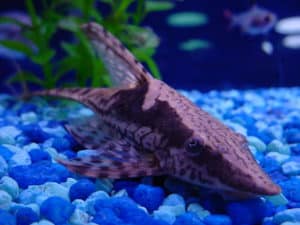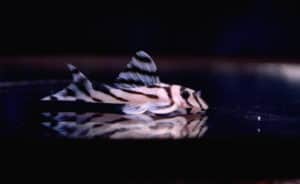Plecos To Buy In New Jersey
When hobbyists hear the word pleco, images of catfish suckered onto glass and various aquatic surfaces come to mind. Unbeknownst to many newcomers in the hobby, the common pleco is not the only loricariid in the Amazon, or our store for that matter. Loricariids are an extremely important component to the ecosystems in the Amazon, making up the largest family of catfish with new species being described every year. These fish have adapted to their respective environments over many years, providing us with a plethora of catfish in different shapes and colors. Today we’ll be going over the top 5 plecos I recommend to hobbyists looking to get their toes wet keeping these armored catfish.
Before I begin, I’d first like to mention I won’t be selecting specific species but rather small groupings of genera within the Loricariid family. With so many to choose from it’s a bit of a disservice to recommend specific fish. Each genera has its specific behavior and care requirements, and hobbyists can select any of the fish in each grouping that better suits their aquarium set-up and its inhabitants. Without further ado, lets gets started!
- Panaque/Panaqolus
The fish in this group consist of mainly royal plecos, clown plecos, and one of my favorites, the L204 flash pleco. Royal plecos can get very large, requiring excessive filtration to keep up with their heavy bioload. The smaller fish in this genus also tend to be very shy when compared to others such as ancistrus and leporacanthicus. These fish have an affinity for mowing down wood in the aquarium in search of aufwuchs (the collection of small animals and plants that adhere to open surfaces in aquatic environments). These fish although beautiful will demolish your favorite piece of driftwood over time and leave the trails all over your substrate for you to vacuum later. Therefore, I won’t rank them higher on this list.

- Leporacanthicus/Scobinancistrus
Loricariids in this genus avoid plants and have a more carnivorous diet. A few examples would be the sultan pleco, vampire pleco, sunshine pleco, and triactis pleco. These loricariids can get a medium to large size, with some topping over a foot. Because of this, most leporacanthicus are not suitable for smaller tanks. As a result of their preferred diet, it is also a bit more of a challenge to maintain good water conditions. Prawns, Mollusks, and other inverts should be fed regularly, with the addition of algae wafers and driftwood. Although they are very colorful, the species in this genus tend to be more aggressive than most.
- Rineloricaria
These are known as the whiptail catfish. We have a few in our store, with my personal favorite being the royal farlowella. These fish are very distinct because of their narrow, twig-like bodies. This genus is well suited to planted tanks, as they won’t bother most plants. Diet consists mainly of algae and other greens, dropping in some spinach or zucchini would be a nice addition to a staple of algae wafers. As with all loricariids, a piece of driftwood in the tank for them to graze on between feedings is encouraged. These are very peaceful, so they would do well with other bottom dwellers and community fish in home aquaria.
- Hypancistrus
If you want a bit of color and a striking pattern in your small tank, choosing a hypancistrus may be the right choice. Some examples are King tiger plecos, Queen Arabesque, L333, and the coveted L46 zebra pleco. These loricariids do especially well in smaller community tanks. However, if you are experiencing an algae problem these fish won’t help much. Much like leporacanthicus these plecos share many of the same dietary requirements, except they only reach a fraction of the size as adults. They are also less territorial and won’t tear your planted tank apart with their displays. Due to their diminutive size and shyer disposition, they don’t do to well in a tank with aggressive feeders. Hypancistrus are best kept in peaceful community and species-only aquariums.
- Ancistrus
This is my personal favorite genus, as it contains the bristlenose pleco and its various color morphs. Other examples include the l183 bristlenose, and medusa plecos. Ancistrus tend to be hardier than most other fancy plecos, tolerating a wider range of water parameters. This also makes them a more forgiving choice for the new aquarist who is just starting to keep rarer fish. They are true omnivores, eating both algae and meatier foods. As juveniles its important to feed a plant-based diet, supplementing them with fresh vegetables or fruit. As these fish mature, shrimp pellets should be fed regularly. Being so versatile, I’ve seen this fish thrive in planted tanks and African cichlid tanks alike. New and experienced hobbyists both can appreciate these catfish and their value in a clean-up crew.
All in all, these are only a few of the various species of loricariids available in the aquarium trade. Luckily, we keep many of these fish in stock at Absolutely Fish. Stop by and view some of the most popular tropical fish kept today, you may even find more than a few gems not on this list!


